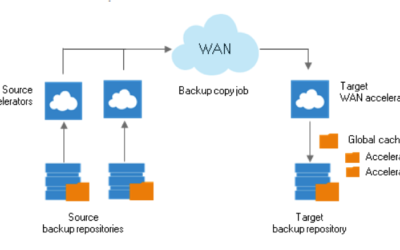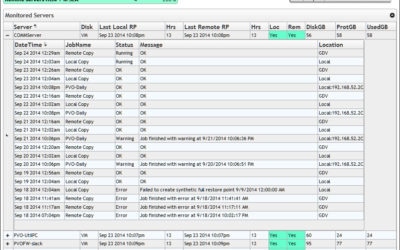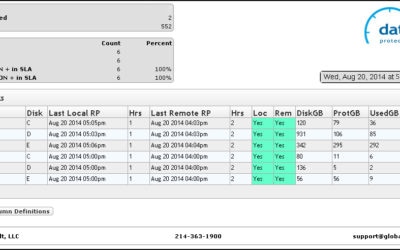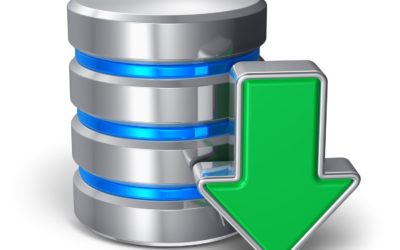It’s that time of year again, when the analysts analyze and publish the Gartner Magic Quadrant insight into products and solutions ahead of a calendar year budget cycle. This is for good reason, although Gartner recommends against buying solely based on what is farthest top and right, stating that niche and visionary products may be extremely well-suited for a company’s needs. Veeam Software is an unusual participant in the quadrant, given that they entered it in the visionary section, and were the first company to do so with only a virtualization offering, being “built for virtualization.” All the other companies had solutions to protect physical environments or were created to protect physical and then bootstrapped or developed into the virtual space.
One of the items that rings true to customers of all sizes is the ease of implementation and use of the products. Complex implementation and management/maintenance of products translates to more overhead and dollars (e.g., higher TCO, higher risk) and has remained a pain point for many products. Again, Veeam has remained the exception, with ease of implementation and use being a core consideration for customers. Implementation costs are lower, ongoing realized costs remain lower, yet satisfaction and the “wow, this actually works” factor remains high.
Since their first appearance on the Magic Quadrant, Veeam has continued to innovate and be thought and product leaders in the market. Veeam has been a “backup and replication” product since early on, while most products were simply labeled “backup and recovery.” I always found this a bit odd, because if you couldn’t recover a backup, then what good was it? The bigger “a-HA!” for Veeam came when customers learned they could actually recover entire virtual machines—successfully, mind you—within minutes. Gartner took notice.
Fast forward a few years, and cloud offerings for offsite data storage became the new buzzwords. Cloud capabilities became a new measure in the MQ. Why should companies spend the money on Disaster Recovery equipment and multiple locations when they could easily write data to the “cloud” and let the “cloud people” deal with it? The major “cloud” companies began clawing and scratching and innovating, but for many customers, it still comes down to a few items: cost, ease of use, and reliability (we’ll throw service and support in there as part of it.) Customers quickly realized the “cloud” can be a bit, well, cloudy. It is easy to have a “throw more storage at it” attitude, because that generates revenue. Many customers suffered with costs related to restoring data, and the help they received from the cloud provider, especially if the bandwidth or data limits had been met or exceeded according to contracts.
At Global Data Vault, we realize the pain points of something that should be easy and cheap, and maybe a little magical. We adopted the Veeam messages of “it just works” and “always on” and added our own: It’s always our problem. We make offsite data storage for both backed up and replicated virtual machines easy. By utilizing Veeam Software, one of Gartner’s leaders, we guarantee service and delivery our customers expect, all with simple and transparent billing and reporting. With lower overhead and lower TCO, Global Data Vault excels in satisfaction and providing a truly customer-centric cloud experience.
More Backup and Disaster Recovery Posts
Fully Managed Backup and Disaster Recovery Solutions
Good technology just works – right? That’s right…until it doesn’t. We all know that even the best managed IT environments require careful attention to be sure that your tools work when you need them. Backup and disaster recovery are particularly critical – these...
Does Your Cloud Disaster Recovery Service Come with Hidden Fees?
When it comes to picking a cloud disaster recovery service provider, you can make an easy choice by simply picking the one with the lowest rates per GB, right? Not so fast. Even if a cloud disaster recovery provider quotes you mere cents on the dollar per GB, the...
What is Cloud Disaster Recovery (Cloud DR)?
What Is Cloud Disaster Recovery? Often shortened to Cloud DR, disaster recovery is a plan put into place in case a disaster hits. Cloud DR refers to the component in your disaster recovery plan that involves the use of a cloud backup environment. The Cloud Component...
WAN Acceleration for all Cloud Disaster Recovery Customers
Global Data Vault is adding “WAN Acceleration” for our customers with physical servers – we already provide this for virtual environments and the results have been terrific – in some cases data is now moving 50 times faster. So now we’re adding it for all of our Cloud...
West Coast Companies Prepare Cloud Backup and Disaster Recovery Solutions
Los Angeles is aiming to prepare for the next big earthquake, yet some companies may already be prepared. LA Mayor Eric Garcetti outlined a proposed preparedness plan that would give the city a layer of resiliency when the “Big One” hits, according to NBC, but not...
Restore Point Console
Global Data Vault’s Cloud Disaster Recovery Restore Point Console Our web based portal shows your data protection status with drill downs to the available restore points. The restore point console runs on any browser and is tablet/mobile compatible. What's Shown Here:...
Data Protection Dashboard Provides Easy to Use Status Window
Global Data Vault Web Portal At Global Data Vault, we ensure the quality of your recovery environment through constant monitoring. Nothing is more important to your business operations than your data and the systems that support it. Not only do we monitor your...
RPO and RTO Monitoring
A critical step in creating a disaster recovery solution is determining your RPO (restore point objective) and your RTO (restore time objective). In essence, these are the point in time that you need your data recovered to, and how fast you need to achieve that...








0 Comments